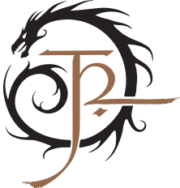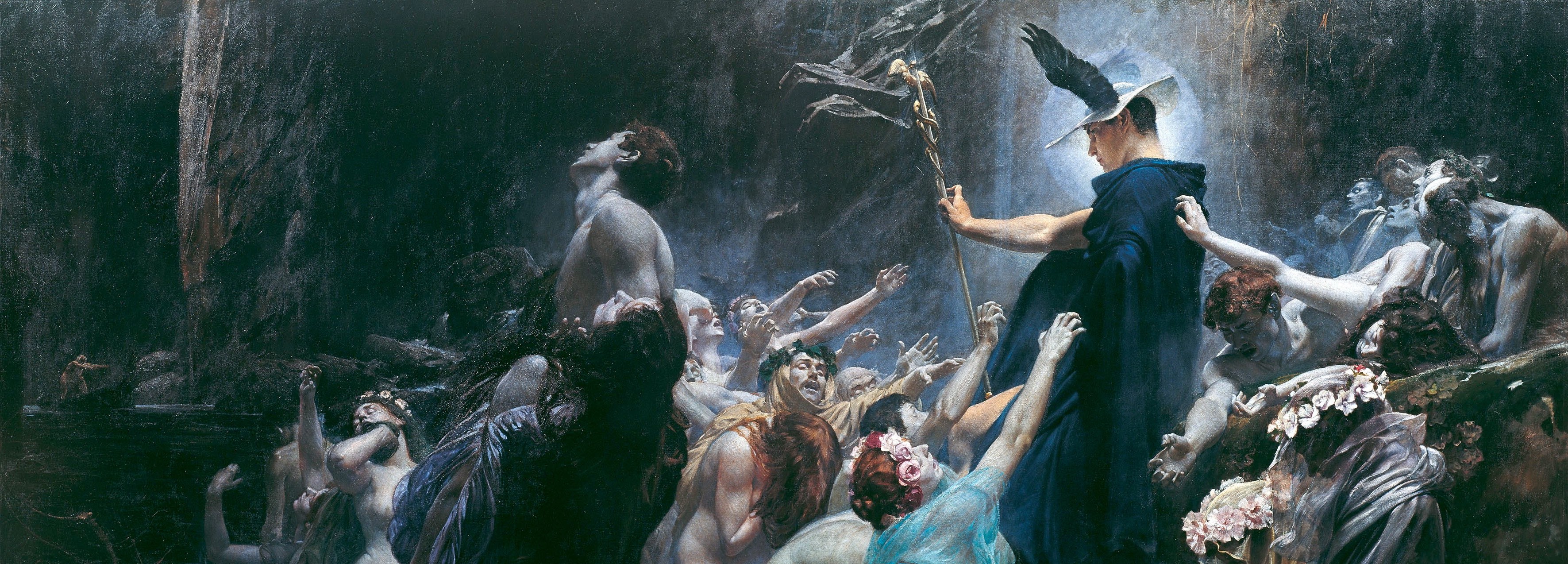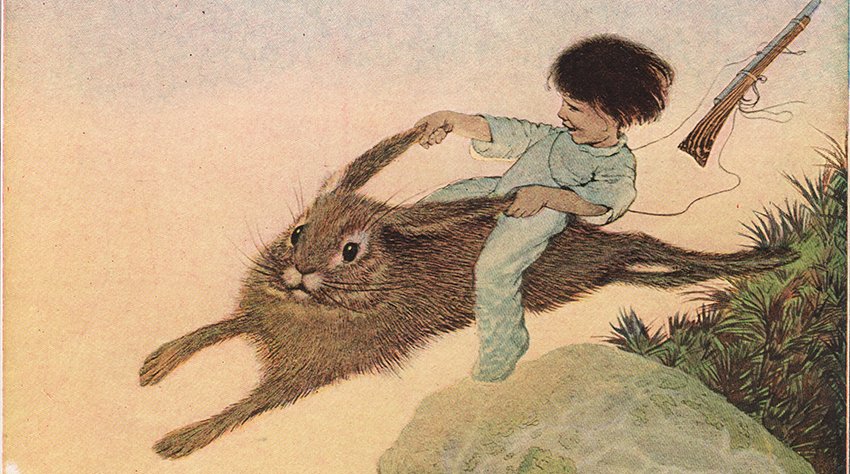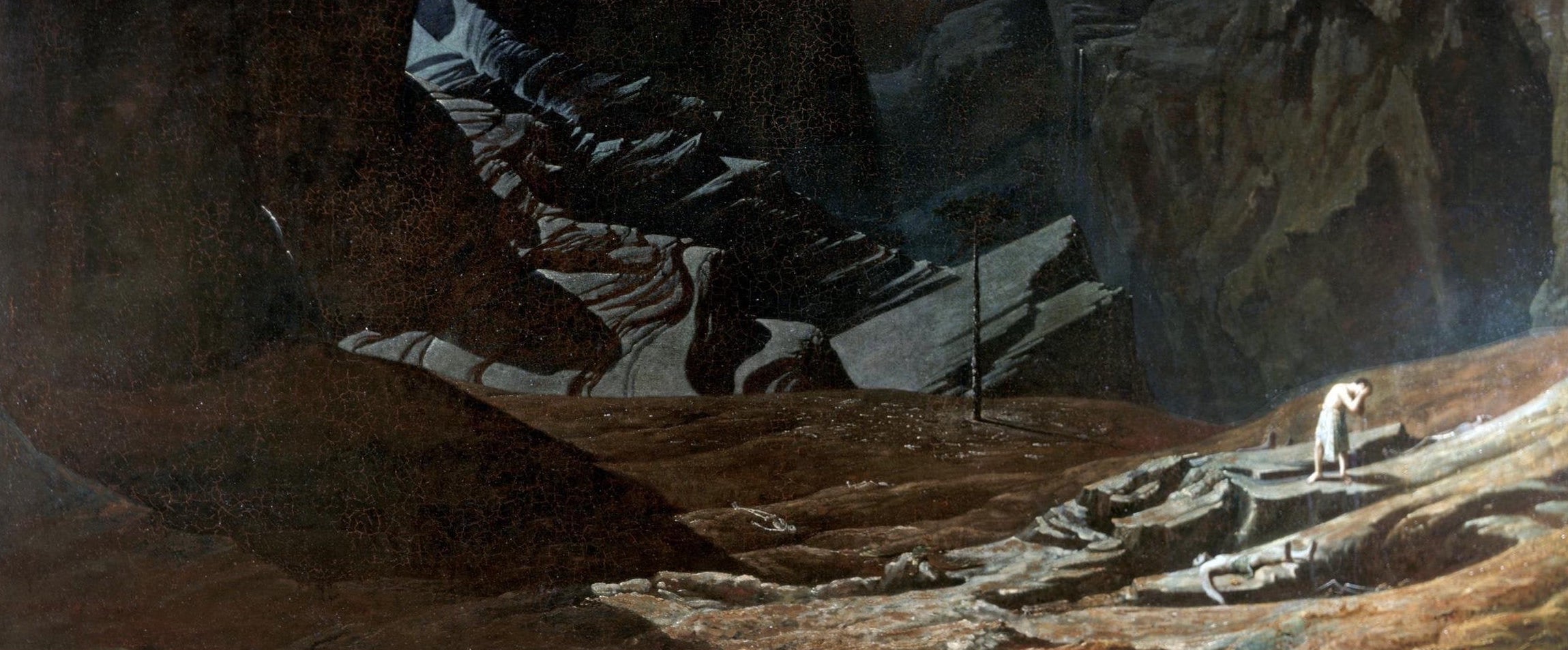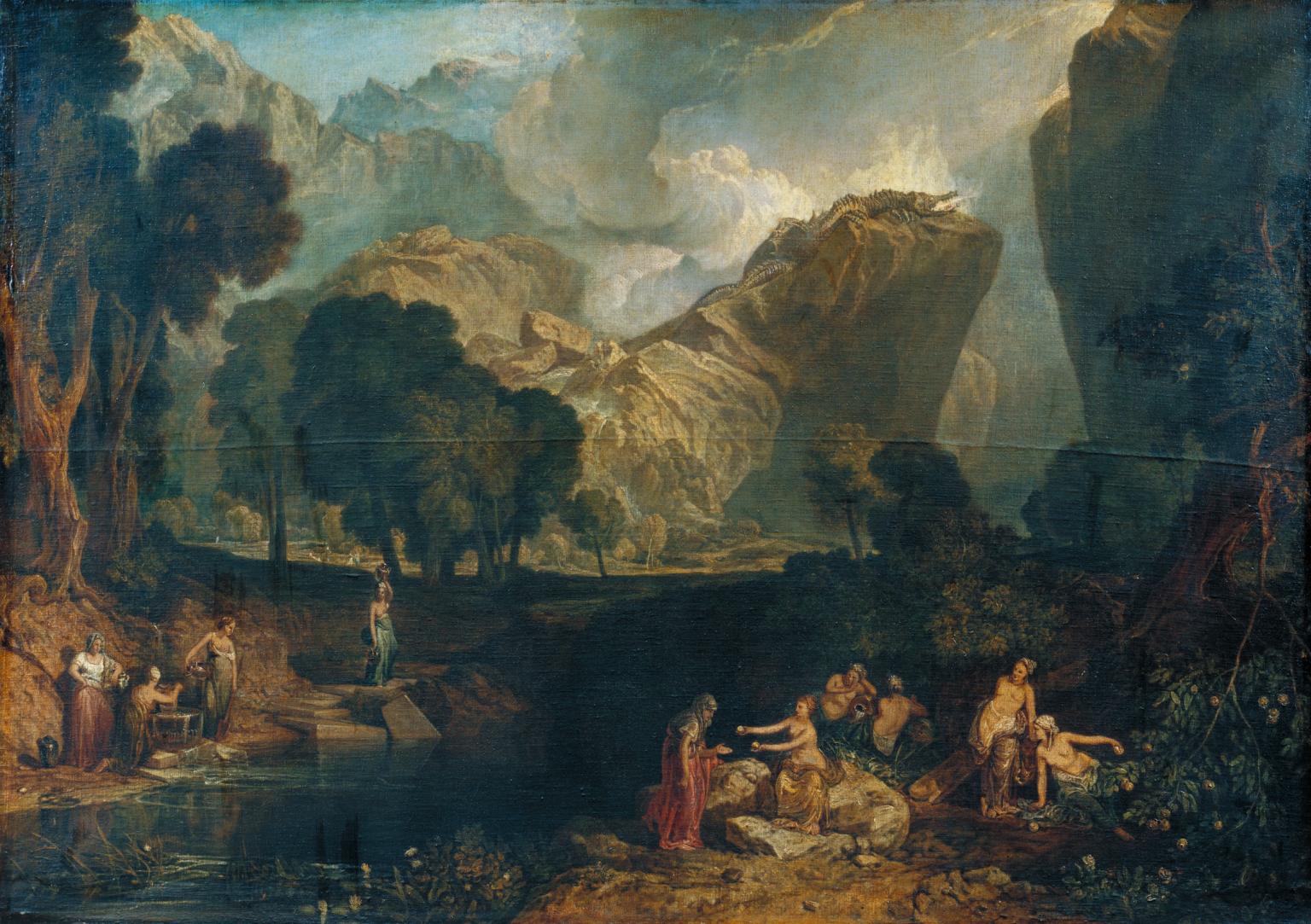Hermes is a tricky fellow, the ancient Greek equivalent of Raven, Coyote or Loki. He is a mediator, a guide between worlds, principally the worlds of life and death, a messenger between gods and mankind, but also a traveler in the circadian liminality of dawn and dusk. Hermes is a go-to man, a go-between, one with a foot in two worlds. His name is said to have come from the herma, or boundary-marker[1], but likely he is one of those intruding gods of older origins, who wandered unannounced into a new pantheon, and occupied sui generis a role played before in a far different context. Folk etymology credits him with the invention of hermeneutics, but he is not a reader of texts, much less an interpreter of them. Like Hekate, he is on the move, or near those who are: routes and voyages, though he leaves crossroads, which are tricky even for a trickster, to her superior wisdom and eerie grace.[2]
Hermes on the road. Archaic bearded head of Hermes from a herm, early 5th century BC. “Herma” signifies “pile of stones”, or “cairn.” The term hermai came to define markers conventionally associated with Hermes. They took the form of a simple square stone pillar surmounted with a carved head of the god and a phallus on the column at the appropriate height.
Hermes is witness to the ever-growing difficulty of humanity to decide what to do with borders. Archaic Greece had no need of psychopomps and the gods, when they wished to speak with humans, came down in person. Little by little, though, things grew more complicated. Propitiation and ritual placated the shades of the afterlife, but clumsy ceremony and forgetfulness could see them return and loiter on the edges of sleep, until their desires were satisfied. Gods grew loftier and required messengers, the places of souls’ crossing-over became fraught – pennies for the ferryman – and even fate could occasionally be negotiated.
Hermes was also a syncretic being – as Hermes Trismegistos (Thrice-Great Hermes) his cult merged with that of Thoth in Hellenistic Egypt, with its centre in Khemnu, which the Greeks called Hermopolis, prefiguring Hermeticism. The writings attributed to him have guided Western esoteric tradition, with ups and downs, since their inception. Three is not a number associated with Hermes, who prefers four, but the “three parts of wisdom of the whole universe”: alchemy, astrology and theurgy (the practice of rituals) form the basis of much of it, with excursions and detours, via the Trinity and ritual, into Christian thought.[3]
Hermes mixes things up. Hermes Trismegistus, floor mosaic in the Cathedral of Siena. Thrice-Great Hermes rapidly dons all the medieval trappings of wisdom: beard and robes and mystically mysterious air.
The Romans of course knew him as Mercury – mercurial, volatile and impertinent messenger between the divine and the mundane. Mercury is the golden-tongued patron of poetry and travelers, trade, trickery and deceit. He has the same attributes: talaria and petasos, but displays an augmented volatility, until it becomes his true essence: a mercurial god who leaped straight across the Ionian Sea, from Greece to Rome.[4]
Mercury chats with a serpent. Mercury, painted between 1870 and 1873 by Pre-Raphaelite artist Evelyn de Morgan, often inadequately described as a “follower” of Edward Burne-Jones. He is depicted carrying the caduceus, wearing winged sandals and petasus. The model is Evelyn De Morgan’s brother, Spencer Pickering. The staff of Mercury is recognised at a symbol of balance, peace and union, though here Mercury has let one of the serpents escape.
Art is a negotiation between the everyday and the liminal, between the mundane and the sublime, it is the domain of Hermes, of Raven, of Loki, Anansi, Eshu, Coyote or Susano’o. In the words of Ursula K. LeGuin: “The way of art, after all, is neither to cut adrift from the emotions, the senses, the body, etc., and sail off into a void of pure meaning, nor to blind the mind’s eye and wallow in the irrational, amoral meaninglessness – but to keep open the tenuous, difficult, essential connections between the two extremes. To connect. To connect the idea with value, sensation with intuition, cortex with cerebellum.”[5]
Art means traveling with Hermes and his crowd. (A motley lot, one might add, as even the most varied of myth-cycles have a trickster god, trickster goddesses are much scarcer. The trickster’s role is not necessarily to upset established order, to uproot world-trees or precipitate the world’s ending, though he can, by his meddling, provoke both nobler and more villainous spirits to do so.) Art means rocking boats, not so much they upset and sink, but to remind the passengers that complacency is dangerous, that alertness and eyes on horizons are necessary.
Hermes is psychopomp and psychogogue: aiding the souls of the dead to make the passage to the afterlife, but equally a guide to souls through the underworld. He is also Hermes Oneiropompus – guide through dreams.
Hermes helps out. “Souls on the Banks of the Acheron” by Hungarian Symbolist Adolf Hiremy-Hirschl. Oil on canvas, 85 x 134 in.Hermes Necropompos guides the souls of the reluctant dead to Hades. In the distance, Charon’s barque can be seen approaching,
The same stories told again are only the same if nothing changes between the two tellings, if the ritual is so entrenched it has lost all meaning. Art isn’t necessarily about telling new stories, it is about finding new ways to tell the ones that have been being told since storytelling began. This is why it is Hermes’ territory, the land of In-Between, where meanings are double, where the wider order of things is not questioned, but the connections are continually tested. Hermes wanders between ordained fate and luck, between established order and willful disruption. Hermes is a precursor of the modern supervillain who never undermines the status quo despite all the mayhem. (The modern superhero is also singularly ineffectual – they never eradicate social injustice or disease or durably improve humanity’s lot.)
Hermes, Coyote, Raven and their patchwork coterie of knaves and thieves are there to remind us to stay alert, to remind us of our embodiment and disembodiment, to recall that we are creatures of illogic and passion, of clairvoyance and intuition of intelligence and superstition. Journeying with Hermes is to tread the paths of sub-creation, that term so dear to Tolkien, part conceit and part sincere, that defines humankind’s telling of tales.
Loki goes fishing. Illustration from the Icelandic Edda dated 1760. Ólafur Brynjúlfsson – Sæmundar og Snorra Edda, 1760
When stories were told, before they were affixed in writing, the tellers knew them by heart, but were also not shy about changing them to suit circumstance; so well-versed were they in the context that if a line or a rune did not materialize from memory, they could nevertheless tell the story – different words, but same path. The listeners might recognize the change, but knew it was without importance; the world was a predictable yet uncertain place, a little latitude was part of it. (Orthodoxy had not yet been invented, that was to come from that all-powerful hegemonic alliance of men and books.)
We humans are creatures in perpetual movement, everything about us is movement: we grow, age, we change, we evolve, willingly or unwillingly. That is the reason we yearn so heartily for stability and certainty, the framework in which our changes can be meaningful.
From left to right: Loki being Loki. “Ohé! Ohé! Horrible dragon O swallow me not! Spare the life of poor Loge!” “The Rhine’s pure-gleaming children Told me of their sorrow.” Arthur Rackham’s Illustrations from “The Rhinegold & the Valkyrie” by Richard Wagner, London: William Heinemann, New York: Doubleday, Page & Co., 1910
Loki sleeps around. Loki’s Offspring by Carl Emil Doepler, Illustration from “Walhall: Die Götterwelt der Germanen” by Wilhelm Ranisch, 1905. Loki is the father of Hel, eponymous goddess of the Underworld, of the wolf Fenrir, and the world serpent Jörmungandr, all three by the giantess Angerbotha. By his wife Sigyn, Loki is the father of Narfi (also called Nörr, who is in turn the father of Nótt, the night incarnate, herself mother of Thor). In a brief transgender idyll, Loki takes the form of a mare and mates with the stallion Svathlifari, becoming the motherof Sleipner, Odin’s eight-legged steed.
Loki’s comeuppance. Loki and Sigyn, by Carl Emil Doepler, Illustration from “Walhall: Die Götterwelt der Germanen” by Wilhelm Ranisch, 1905. The gods of Asgard finally grow tired of Loki’s antics. Following the death of Baldr the Beautiful, he is chained to a cliff, where a serpent drips venom in his face. Loki’s wife Sigyn catches the venom as best she can, but when she must empty the bowl, the drops that fall on Loki’s face burn him so fiercely his writhing causes earthquakes.
Art is, in that sense, paradoxical. Product of fleeting beings, art’s main goal is permanence. (This is especially true for all ephemeral art, performances, happenings; the goal of permanence residing not in the art itself but in the recording of it.) These pebbles strewn along the path are the witness to our impermanence and imperfections, as Hermes takes pleasure in reminding us.
That is why he is the perfect guide through Art. Hermes deflates the pompous, punctures the certitudes of the complacent, pries loose the stones at the foundation of the establishment. He and his travelling companions are the friends of the outcasts, the outsiders, the ones who do not fit in; Coyote laughs at others, but also at himself. Raven is both cunning and naïve, he has street sense, but is as gullible as those who are the butt of his jokes.
Susano-o takes on a sea dragon. A painting by Kawanabe Kyōsai (May 18, 1831 – April 26, 1889) depicting Susano-o no Mikoto subduing Yamata no Orochi the eight-headed serpent. Meiji period, 1887
Nonetheless, good comes of his pranks. When he steals the sun from the cedar chest, he does so by trickery. Fleeing before Eagle, he drops half of it; that part shatters on the ground and rebounds into the night sky: moon and stars. The remaining half he abandons in the morning sky: the sun. Why attribute such a tale to Raven, why not simply have an all-seeing god distribute the heavenly bodies? The logic that makes them a product of raven’s brazen theft and subsequent clumsiness is that we must not expect anything by divine right, these things are not our due, they are the product of strife and circumstance. The universe itself needs watching out for (read about Jung and the Navajo elder Mountain Lake for that particular story) and must not be taken for granted. Our lives must be cosmologically meaningful, and one of the paths towards that meaning is Art. The artistic impulse, simultaneously supra-personal and intimate, is one of mankind’s most constant and earnest endeavours. Like the sun, moon and stars, it simply is. Making art is akin to making the sun rise and the moon and stars appear. In Jung’s words: “The biographies of great artists make it abundantly clear that the creative urge is often so imperious that it battens onto their humanity and yokes everything to the service of the work, even at the cost of ordinary health and human happiness. The unborn work in the psyche of the artist is a force of nature that achieves its end either with tyrannical might or with the subtle cunning of nature herself, quite regardless of the personal fate of the man who is its vehicle.” This process is not “reasonable,” it is as natural as breathing: “We must be able to let things happen in the psyche. For us, this becomes a real art… Consciousness is forever interfering, helping, correcting, and negating, never leaving the single growth of the psychic processes in peace.”
Raven goes home. In 2010, the 140-year-old raven totem pole that was erected in Jasper National Park in Alberta in 1919 has made its way home to the people of Haida Gwaii in Old Massett, B.C. Raven is figured with the children he rescued from a flood in one of his adventures. They are standing on the back of a frog.
Bound up in all this as well is Jung’s notion of pursuit of the archetype: “Whoever speaks in primordial images speaks with a thousand voices; he enthrals and overpowers, while at the same time he lifts the idea he is seeking to express out of the occasional and the transitory into the realm of the ever-enduring.” He adds:“All art intuitively apprehends coming changes in the collective unconsciousness.”
These are exactly the tricks of the trickster’s trade: playing the wise fool, telling the same story ad aeternum because neither teller nor listeners are twice the same, reminding us to keep our eyes peeled, that things are not necessarily what they seem. Art is the point of contact with the cosmos and the artist’s agent is a trickster, because art is not straightforward. Art’s very ambiguity is a catalogue of the complexities, strengths, failings and inconsistencies of the human spirit. This is the sacredness of the secular.
Hermes causes confusion. Hermes Kriophoros (Late Roman marble copy of the Kriophoros of Kalamis, Museo Barracco, Rome)The image of Hermes carrying a ram to sacrifice has often been interpreted as the rather more benign “good shepherd.” Nonetheless, this resonates with Hermes’ role as psychopomp, though his flock is not sheep or goats, but departing souls, and their transhumance the journey to the afterland.
In the words of Le Guin: “Our culture doesn’t think storytelling is sacred; we don’t set aside a time of year for it. We don’t hold anything sacred except what organized religion declares to be so. Artists pursue a sacred call, although some would buck and rear at having their work labeled like this. Artists are lucky to have a form in which to express themselves; there is a sacredness about that, and a terrific sense of responsibility. We’ve got to do it right. Why do we have to do it right? Because that’s the whole point: either it’s right or it’s all wrong.”
That is the point of any journey: the company you keep on the road.
˜˜˜
Footnotes:
[1]There is something inherently backwards in this reasoning; difficult to imagine that an anonymous figure should be thus so widely represented and eventually become the name of a god.
[2]He is nonetheless present in the form of hermai, initially heaps pf stones or simple wooden or stone posts; later forms are squared stone columns (four was sacred to Hermes) with a bearded head and male genitals. Hermes is a true flouter of norms: the child he fathers on Aphrodite is the androgynous Hermaphroditus.
[3]Hermetic thought is incredibly complex and this is hardly the place for it.
[4]As befits a trickster, Mercury lets both Julius Caesar and Tacitus lead us astray with their comments to the effect that he is respectively the god of Celts and Germans. What they likely meant is that these peoples prided themselves on their talent fro commerce.
[5]Ursula K. LeGuin. The Language of the Night: Essays on Fantasy and Science Fiction, HarperCollinsPublishers, 1989 (revised edition)
